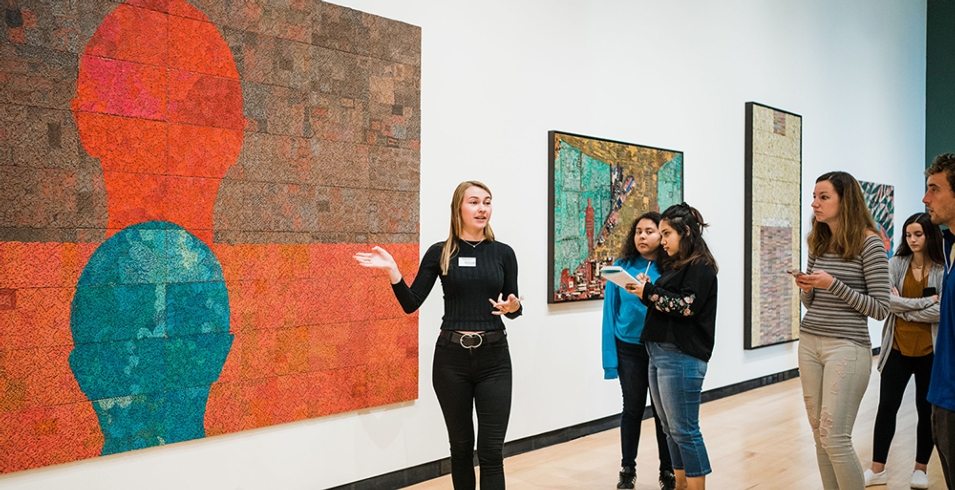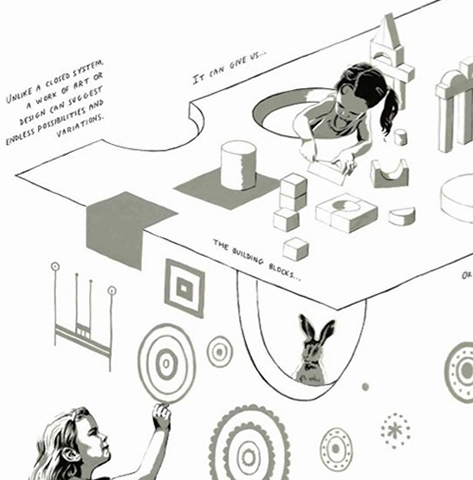Janelle Rodriguez

As a teaching museum within a liberal arts college, the Wellin Museum of Art embraces an interdisciplinary dialogue surrounding its works on view. The student docent often views artworks on display through the lens of their academic interests. Merging the classroom with the gallery space, I interviewed Molly Tracey ‘20 and Mary Bei Prince ‘20 to see how their fields of study influence interpretations of Elias Sime: Tightrope.
The embroidered surface of Ants and Ceramicists II, depicts hundreds of hand-stitched ants crawling in an abstract mass. To interpret the swarming collection of ants, Molly sees the work through a sociological lens. In her perspective, the patterning illustrates the “Change in Trends of Childhood” concept she is studying in her Sociology of the Family class.
According to this sociological theory, there are two forms of raising kids-concerted parenting. The first, “where the parents structure most of their kid’s time to ‘develop’ their child and are very involved”, and the second where “there is less involvement from the parents in structured activities, leading to free time for the child to ‘develop’ alongside their peers''. Molly sees this second form illustrated in Sime’s work as “the ants remind me of how many other people are indirectly involved in raising groups of children, just like how many different ants work together to build their colony”.
Mary Bei’s experience in Chinese Art History has informed the ways in which Tightrope holistically explores the relationship between humans and the environment. Mary Bei notes a similarity between Sime’s work and Taoist conceptions of the natural world as “Sime’s emphasis on technological material recognizes a symbiotic relationship between nature and humanity in ways similar to Northern Song Dynasty landscape paintings. In studying these non-western art historical philosophies, I have reconsidered the Sime exhibition and its commentary on the environment.”
Whether inspired by our academic interests or life experiences, interactions with Elias Sime: Tightrope are personal and unique to each visitor. Open until December 8th, how will your visit be informed by your unique perspective?







